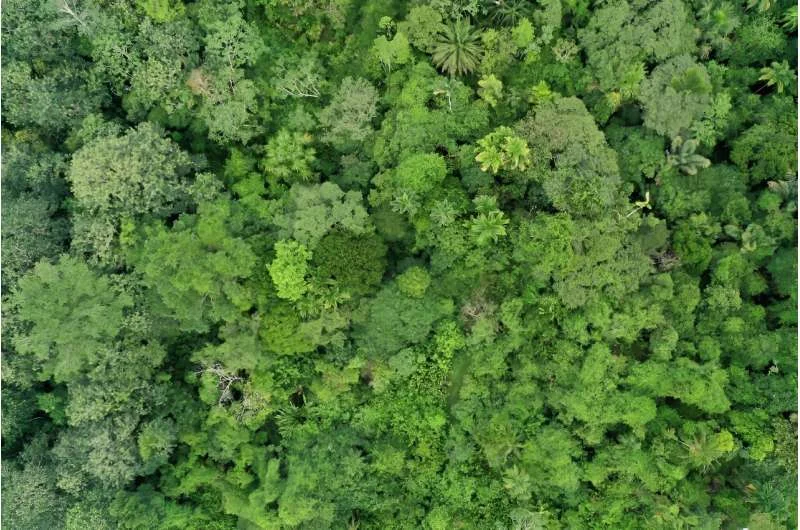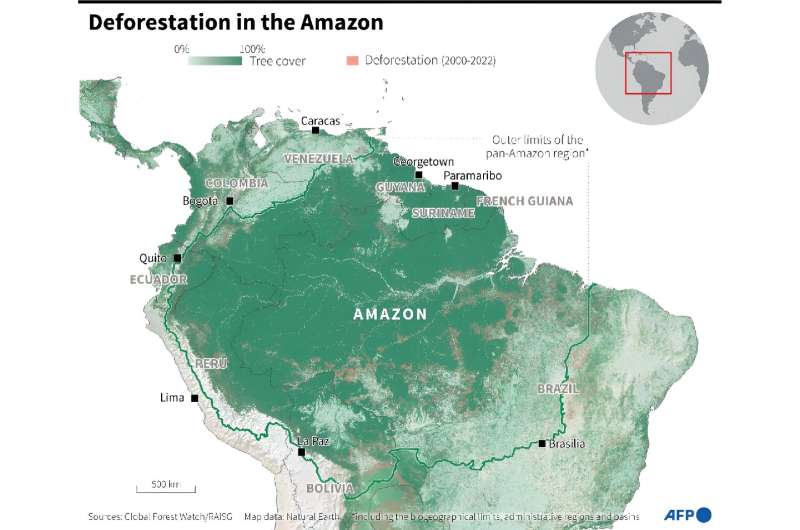Tropical forests approach critical temperatures
- August 26, 2023
- 0
Global warming is putting tropical leafy plants near temperatures where they can no longer convert sunlight and CO2 into energy, putting them at risk of total collapse if
Global warming is putting tropical leafy plants near temperatures where they can no longer convert sunlight and CO2 into energy, putting them at risk of total collapse if

Global warming is putting tropical leafy plants near temperatures where they can no longer convert sunlight and CO2 into energy, putting them at risk of total collapse if temperatures continue to rise, according to a study published Thursday.
A small percentage of upper canopy leaves have already passed this threshold, reaching temperatures high enough (above 47 degrees Celsius) to inhibit photosynthesis, according to a study published in the journal Nature.. Currently, some leaves exceed such critical temperatures by only 0.01 percent, but the effects could escalate rapidly as leaves warm faster than the air, the researchers said.
“You warm the air by two to three degrees, and the true peak temperature of these leaves increases by eight degrees,” lead author Christopher Doughty, of Northern Arizona University, told reporters.
“We predict that leaves could die completely,” he said, if the average tropical forest surface temperature rises by 4°C above current levels (which is generally considered the worst-case scenario).
New research suggests there may be a new factor in the predicted “tipping point” where tropical forests are turning into savanna-like landscapes due to climate change and deforestation. According to the study, if air temperature rises steadily by as much as 0.03C per year, mass death among plants could occur in more than a century.
Doughty and his team supplemented data from NASA’s ECOSTRESS satellite, designed to measure plant temperatures, with ground-based observations based in part on sensors attached to individual leaves.
The scientists warn that it remains unclear how high leaf temperatures will affect the entire forest.
“Believe it or not, we don’t know much about why trees die,” said co-author Gregory Goldsmith of Chapman University.
According to him, it is not necessary to be a scientist to know that a tree dies when it loses its roots. But the interaction and feedback of heat and drought and water and temperature on the overall health of trees is less clear.

Complete death of leaves does not necessarily mean complete death of the tree. The critical temperature at which leaves turn brown and die can also vary by species, depending on the size and thickness of the leaves and the width of their crown. But there are already worrying signs. In the Amazon, where temperatures are higher than in other rainforests, the rate at which trees die has increased in recent years.
“The death rate in the Amazon is now higher than in Central Africa, and that may be because of the high temperatures we’re seeing there,” Doughty said.
Increased forest fragmentation due to logging has also been shown to make remaining forests warmer. Tropical biomes contain 45 percent of the world’s forests and play a large role in absorbing carbon pollution from human activities.
According to the Intergovernmental Panel on Climate Change (IPCC), they also contain half or more of the world’s plant biodiversity, namely at least 40,000 different tree species. Senior author Joshua Fisher of Chapman University said it was “a canary in a coal mine” that some leaves were overheated at current temperatures.
“You want to be able to detect something that’s going on before it becomes widespread,” he said. “Being able to do that now gives us the opportunity to really do something as a collective society.”
Scientists not involved in the study said this should be a warning that there are limits to nature’s ability to adapt to climate change.
“It is true that trees and other types of vegetation can absorb emissions and provide cooling,” said Lesley Mabon, a lecturer in ecological systems at the Open University.
“But this study shows that some functions of nature may begin to deteriorate at higher temperatures if there is no concerted human action to reduce emissions and limit global warming while protecting and improving nature.” Source
Source: Port Altele
As an experienced journalist and author, Mary has been reporting on the latest news and trends for over 5 years. With a passion for uncovering the stories behind the headlines, Mary has earned a reputation as a trusted voice in the world of journalism. Her writing style is insightful, engaging and thought-provoking, as she takes a deep dive into the most pressing issues of our time.